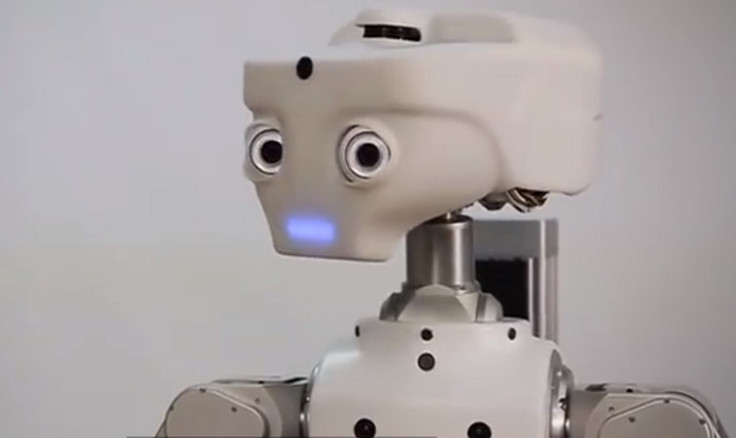Google's Robot Army Takes Shape [VIDEOS]

Internet search giant Google's move into robotics reveals the scale of the company's ambitions like never before.
Over the past year alone, Google has bought eight robotics companies, its most recent acquisition being Boston Dynamics.
IBTimes UK surveys Google's growing army of androids.
1) The Big Dog
It walks, runs and carries heavy loads. It is about 3ft long, 2ft 6in tall, and weighs 240lbs. It can climb slopes up to 35 degrees, walk across rubble, climb muddy woodland trails, and maintain its balance when walking on ice while being kicked. It looks like something out of Star Wars.
2) The Cheetah
The Cheetah runs 28.3 miles per hour, a little faster than Olympic sprinter Usain Bolt on his best day. The robot was designed with funding from the Defense Advanced Research Projects Agency (Darpa), so experts expect it to have military applications. Boston Dynamics this year took off Cheetah's training wheels and started testing it over rougher terrains.
3) Meka Robotics' M1 Mobile Manipulator robot
The Meka M1 Mobile Manipulator is a personal helper robot. It can hold things, it has wheels that make it mobile and an expandable torso that lets it reach objects in high places. It also senses its surroundings through the same Kinect technology used in the Xbox.
4) Dreamer Meka-HCRL Sociable Head
A joint project between Google-owned robotics company Meka and the HRC Laboratory at the University of Texas Austin, Dreamer is an attempt to make a humanoid robot with a diverse range of facial expressions supposed to "elicit a sense of trust and sociability to an otherwise pure mechatronic device". What makes this robot particularly impressive is just how many different expressions Meka and the HRC Laboratory can conjure up using only mechanical eyes and ears.
5) The Schaft
Designed by a team of engineers at the University of Tokyo whose goal was to make the world's strongest humanoid robot. It is significantly stronger than other robots thanks to "high output capacitor-powered, water-cooled motor systems", which help it maintain balance when pushed. Schaft's creators believe it will be used as a disaster response robot in situations too dangerous for humans.
© Copyright IBTimes 2025. All rights reserved.






















